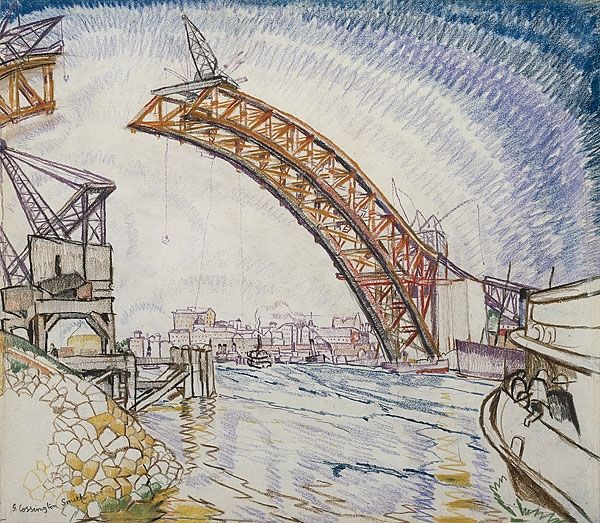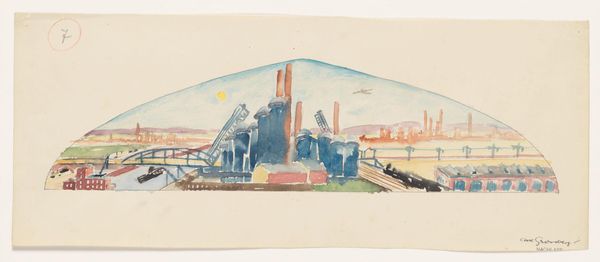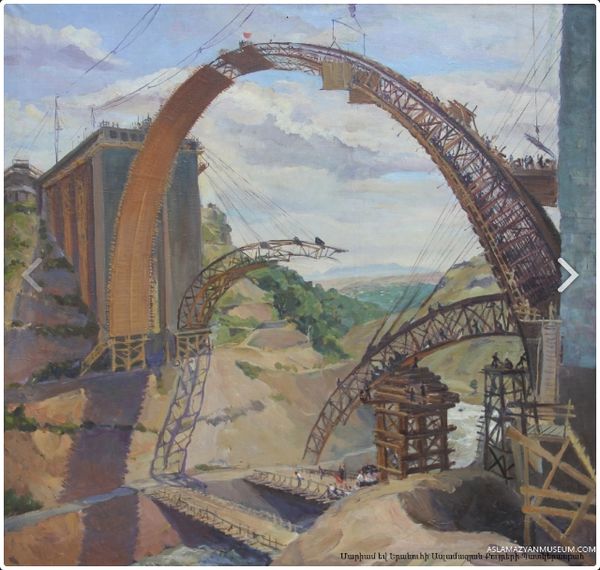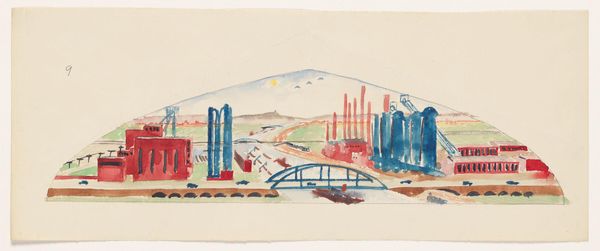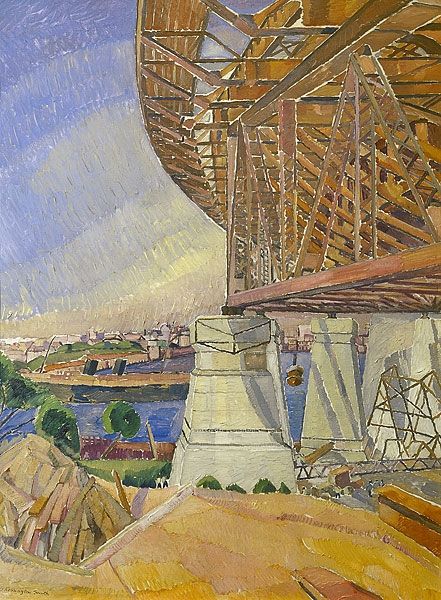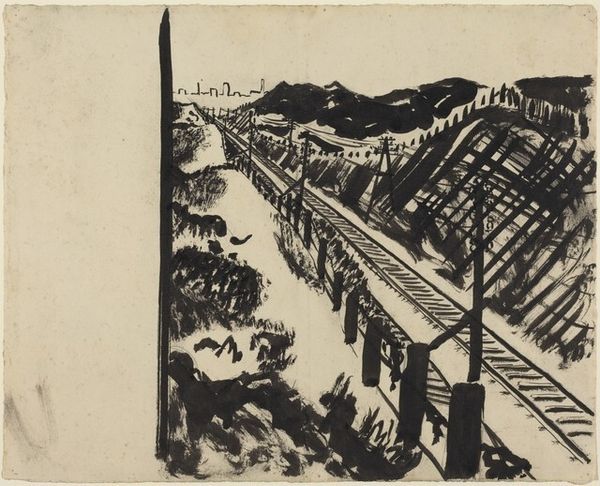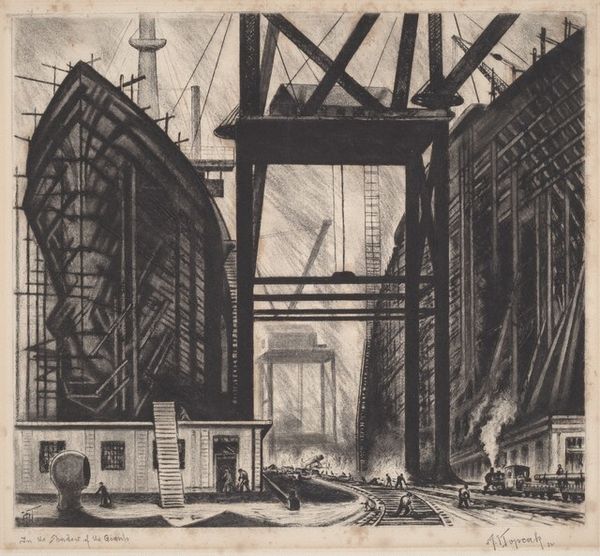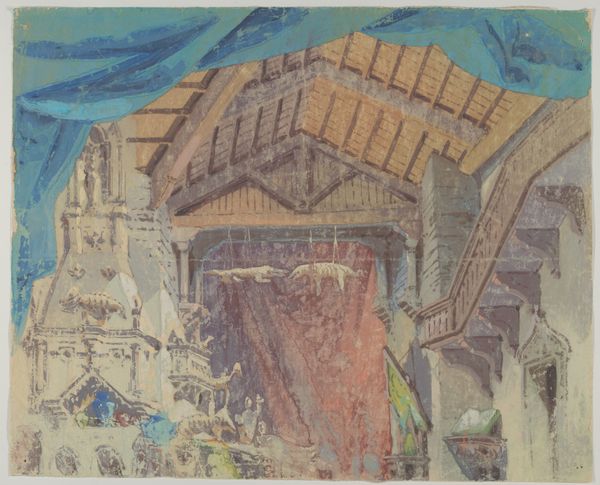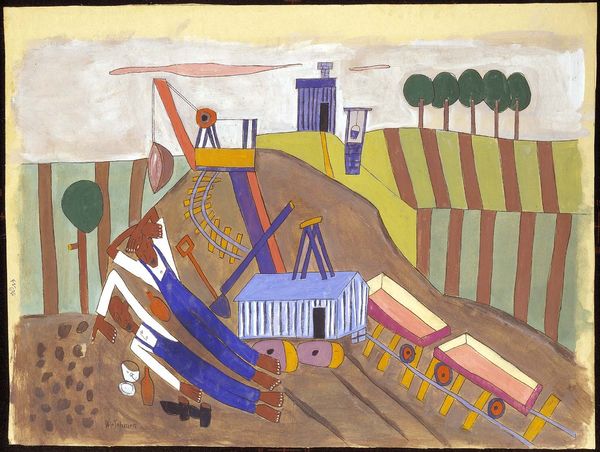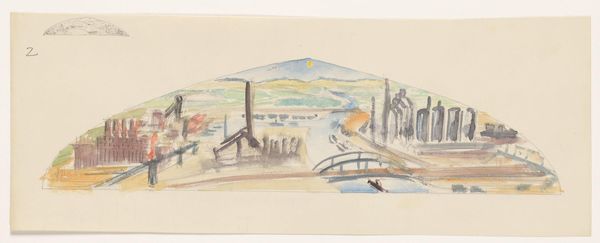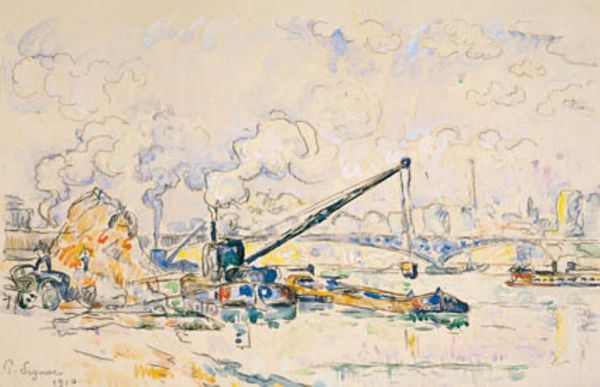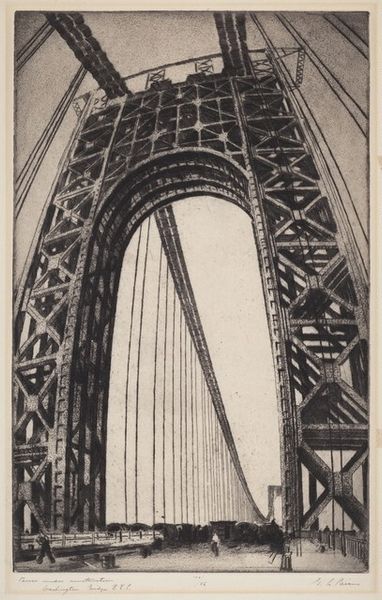
painting, watercolor
#
painting
#
landscape
#
oil painting
#
watercolor
#
geometric
#
cityscape
#
watercolour bleed
#
watercolour illustration
#
modernism
#
watercolor
Dimensions: 83.6 x 111.8 cm
Copyright: Grace Cossington Smith,Fair Use
Curator: Here we have Grace Cossington Smith's "The Bridge in Curve" painted around 1930, presently held at the National Gallery of Australia. It appears to be executed in watercolour, but I have seen sources that suggest oil. Editor: The immediate impression is of nascent modernity rendered in curiously gentle terms. The dynamism of the bridge's construction, that curve, is balanced by this almost pastel-like softness. Curator: It’s an interesting point you raise. Formally, one observes the deliberate, almost staccato, application of paint—notice how she breaks down the monumental subject into geometric segments and distinct colour fields. Editor: Exactly, but that application does so much. Consider the symbolism. Bridges, archetypically, join disparate realms. Smith’s fragmented representation could suggest the disruptive impact of industrial advancement on pre-existing, possibly idyllic, cultural narratives. Curator: I would agree on the connection of disparate elements, but disagree on “disruption.” Looking at Smith’s application of geometric shapes, particularly, they bring structure to the whole. The visual elements lock together and are strengthened precisely because they're divided, not overwhelmed by division. Editor: That division, though, is key to the tension. Notice how the colours themselves are drained of any strong vibrancy. There's a deliberate muting, perhaps symbolic of the artist's ambivalence towards the relentless march of progress. Even the cranes atop the bridge have a somewhat fragile, fleeting quality. Curator: Or consider the use of the watercolor bleed to blend and unite the various elements of the composition. Note also that the bridge in progress acts like a literal gateway toward the more geometric shapes in the horizon—the burgeoning urban cityscape. Editor: In that sense, perhaps the watercolour as a medium itself underscores transience, flux, how physical places morph over time—memories imposed onto land through architecture and the constant march of its making. Curator: An evocative thought. For me, examining the balance in her work—line, colour, composition, the overall pictorial architecture —these elements provide its resonance. Editor: For me, the bridge isn't just steel; it's a cultural symbol laden with dreams and potential, but also anxieties about a shifting world, as recorded in the visual syntax of its time.
Comments
No comments
Be the first to comment and join the conversation on the ultimate creative platform.
